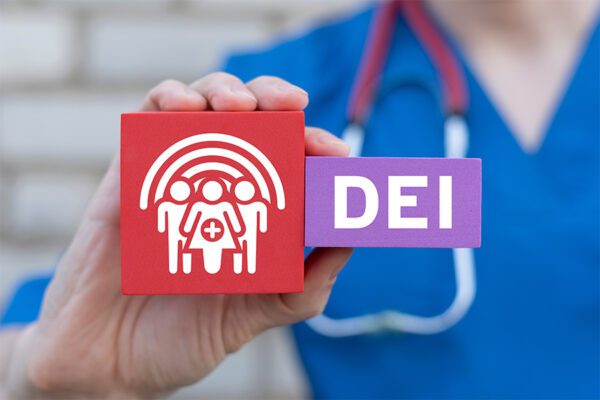COVID-19 Emergency Periods
- Public Health Emergency: The U.S. Department of Health and Human Services (HHS) initially declared a PHE due to COVID-19 on January 31, 2020. The PHE is scheduled to end on May 11, 2023.
- Outbreak Period: The COVID-19 outbreak period will end 60 days after the national emergency. If the national emergency ends on May 11, 2023, the outbreak period will end on July 10, 2023.
A plan to end the COVID-19 national emergency and public health emergency (PHE) on May 11, 2023 has been announced by the Biden Administration. Employer-sponsored health plans have been required to comply with certain coverage requirements during the COVID-19 emergency periods, including the following:
- Health plans must cover COVID-19 diagnostic tests and related services without imposing any cost sharing (such as deductibles, copayments or coinsurance) during the PHE; and
- Non-grandfathered health plans must cover certain preventive services, including recommended COVID-19 vaccines and boosters, without cost sharing. During the PHE, this coverage mandate applies to COVID-19 immunizations provided by all providers, regardless of whether they are in-network or out-of-network.
In addition, during the COVID-19 outbreak period (which is tied to the national emergency), certain health plan deadlines are extended, including the deadlines to request special enrollment under HIPAA, elect COBRA continuation coverage and comply with the plan’s claims and appeals procedures.
Impact on Health Plans
When the PHE ends, health plans will no longer be required to cover COVID-19 diagnostic tests and related services without cost sharing. Health plans will still be required to cover recommended preventive services, including COVID-19 immunizations, without cost sharing, but this coverage requirement will be limited to in-network providers. In addition, once the COVID-19 outbreak period ends, health plans can go back to their nonextended deadlines for purposes of HIPAA special enrollment, COBRA continuation coverage, and claims and appeals procedures.
Compliance Reminders
Until the COVID-19 emergency periods end, health plans must continue to:
- Cover COVID-19 diagnostic testing and related services without cost sharing;
- Cover COVID-19 vaccines provided by out-of-network providers without cost sharing; and
- Extend certain plan deadlines.
Public Health Emergency
Background
On January 31, 2020, HHS first declared that a PHE exists due to the COVID-19 pandemic. A PHE declaration lasts for 90 days unless it is terminated early by HHS. At the end of the 90-day period, HHS can extend the PHE or let it expire. HHS has repeatedly extended the COVID-19 PHE since it began in early 2020. Most recently, HHS renewed the PHE on January 11, 2023. HHS has promised to provide at least 60 days’ notice to the public before the PHE’s end date.
On January 30, 2023, the Biden Administration announced its plan to end the PHE on May 11, 2023. The Biden Administration noted that it opposes proposed legislation that would immediately end the COVID-19 emergency periods, stating that this would create chaos and uncertainty for the U.S. health care system.
Health Plan Changes
When the PHE ends, the following health plan coverage rules related to the COVID-19 pandemic will no longer apply:
- COVID-19 Diagnostic Testing Without Cost Sharing—During the PHE, health plans and health insurance issuers must cover COVID-19 tests and related services without imposing any cost sharing or prior authorization or other medical management requirements. As of January 15, 2022, this coverage requirement extends to at-home COVID-19 diagnostic tests. Health plans and issuers will no longer be required to provide this first-dollar coverage when the PHE ends.
- COVID-19 Vaccines—Out-of-Network Providers—Non-grandfathered group health plans and health insurance issuers must cover coronavirus preventive services, including recommended COVID-19 immunizations, without cost sharing requirements. During the PHE, covered services may be provided by in-network or out-of-network providers. Once the PHE ends, health plans and issuers must continue to cover recommended COVID–19 immunizations without cost sharing but can limit this coverage to in-network providers.
- Standalone Telehealth Benefits—For plan years beginning duringthe PHE, a large employer (more than 50 employees) may offer standalone telehealth benefits and other remote care services to individuals who are not eligible for coverage under any other group health plan offered by the employer without violating the Affordable Care Act’s market reforms. These types of standalone arrangements will not be permitted after the PHE ends.
National Emergency – Outbreak Period
Background
Various deadlines related to employer-sponsored group health plans are extended during the COVID-19 outbreak period. The outbreak period began in March 2020, when former President Donald Trump declared a national emergency due to the COVID-19 pandemic, and it will continue until 60 days after the end of the COVID-19 national emergency (or such other date as announced by the federal government).
On January 30, 2023, the Biden Administration announced its plan to end the COVID-19 national emergency on May 11, 2023. Under this timeline, the outbreak period will end on July 10, 2023.
Deadline Extensions
During the outbreak period, some key deadlines for employee benefit plans and participants are extended. Deadline extensions that apply during the outbreak period include the following:
- HIPAA Special Enrollment—The 30-day period (or 60-day period, if applicable) to request special enrollment.
- COBRA Notice and Premium Payment Deadlines—The 60-day period to elect COBRA coverage; the date for making COBRA premium payments (generally at least 45 days after the day of the initial COBRA election, with a grace period of at least 30 days for subsequent premium payments); and the date for individuals to notify the plan of a qualifying event or disability determination (generally 60 days from the date of the event, loss of coverage or disability determination).
- Claims and Appeals Deadlines—The deadlines to file a benefit claim, file an appeal of an adverse benefit determination or request an external review of a claim under the plan’s claims and appeals procedures.
Under the relief, these deadline extensions end when the outbreak period is over or, if earlier, after an individual has been eligible for a specific deadline extension for one year.
Pre-Deductible Telehealth Coverage
In response to the COVID-19 pandemic, the Coronavirus Aid, Relief and Economic Security (CARES) Act allowed high deductible health plans (HDHPs) compatible with health savings accounts (HSAs) to provide benefits for telehealth or other remote care services before plan deductibles were met. This relief was not linked to the PHE or outbreak period; rather, it applied for plan years beginning before January 1, 2022. A spending bill extended this relief to telehealth services provided in months beginning after March 31, 2022, and before January 1, 2023.
The Consolidated Appropriations Act, 2023 (CAA), which was signed into law on December 29, 2022, extends the ability of HDHPs to provide benefits for telehealth or other remote care services before plan deductibles have been met without jeopardizing HSA eligibility. This extension applies for plan years beginning after December 31, 2022, and before January 1, 2025. Thus, regardless of when the COVID-19 emergency periods end, HDHPs may be designed to waive the deductible for any telehealth services for plan years beginning in 2023 and 2024 without causing participants to lose HSA eligibility.
Material posted on this website is for informational purposes only and does not constitute a legal opinion or medical advice. Contact your legal representative or medical professional for information specific to your legal or medical needs.




